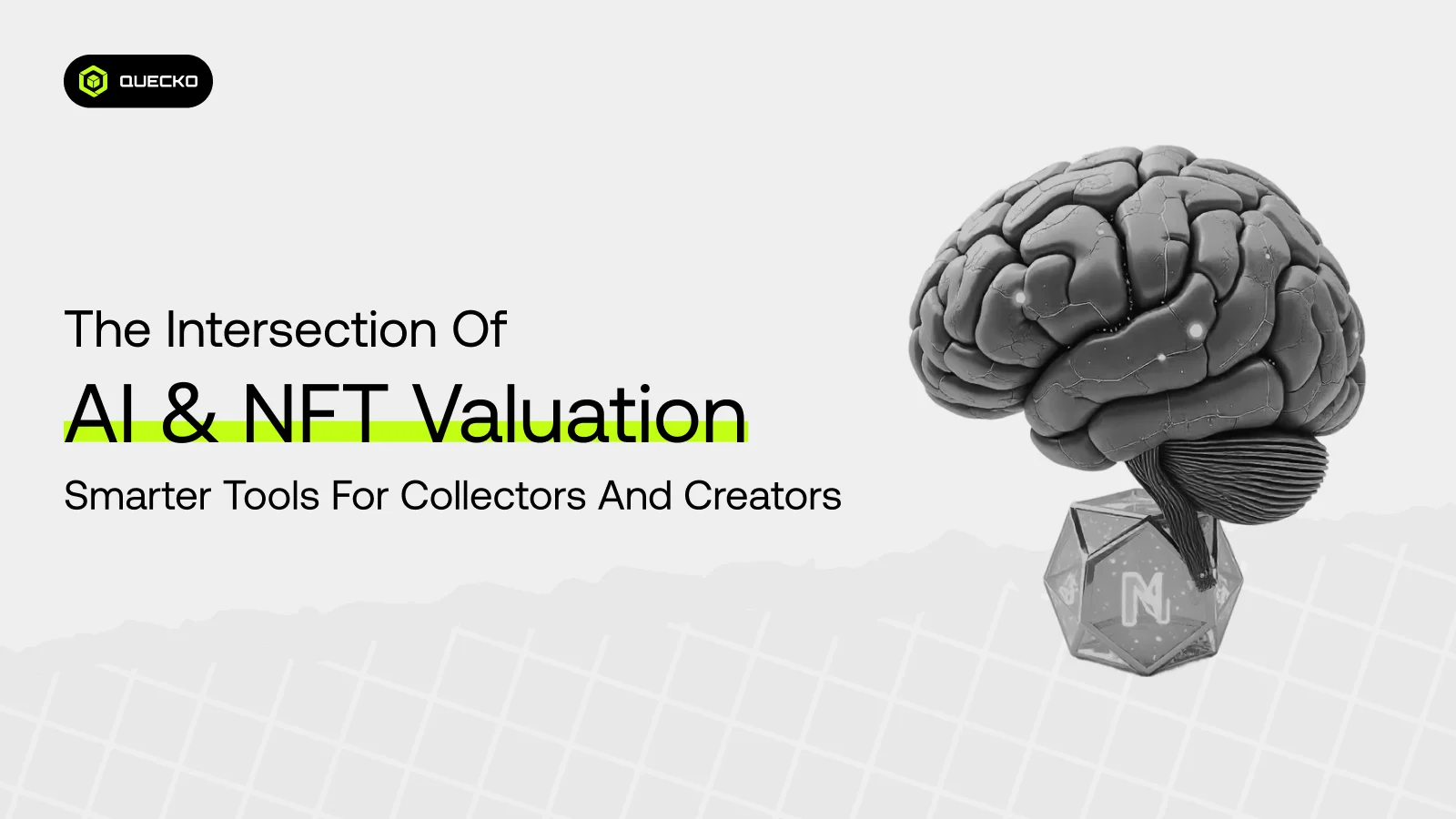The Intersection of AI and NFT Valuation: Smarter Tools for Collectors and Creators
Discover how AI is transforming NFT valuation with smarter tools for collectors and creators, bringing data-driven insights to digital ownership.

The rise of non-fungible tokens (NFTs) has revolutionized digital ownership, enabling creators to tokenize art, music, collectibles, digital artworks, and even virtual real estate. While the NFT market has unlocked new opportunities, it has also raised a critical challenge: valuation. Unlike traditional assets, NFTs don’t have clear pricing models. Their worth is often driven by hype, rarity, community sentiment, or subjective perception.
This is where Artificial Intelligence (AI) comes into play. By combining machine learning, predictive analytics, and blockchain development, AI can bring greater clarity to NFT valuation. Collectors receive smarter tools to evaluate purchases, while creators gain valuable insights into pricing, demand forecasting, and market trends, particularly in the realm of digital art.
Understanding NFT Valuation Challenges
NFTs differ significantly from traditional financial assets:
- No Standard Pricing Framework – Stocks are valued based on company performance, bonds on interest rates, and real estate on location. NFTs, however, rely heavily on subjective elements, such as community hype or creator reputation, particularly in digital art collections. Traditional valuation methods fall short in capturing the dynamic nature of NFTs, which is why AI algorithms are increasingly being explored to decode their fluctuating worth.
- Market Volatility – NFT prices can skyrocket overnight due to viral attention or plummet when trends shift.
- Rarity and Utility – A rare attribute in a digital collectible or art piece might boost its value, but quantifying that impact is difficult.
- Emotional Value – Many buyers purchase NFTs due to their personal attachment to the original pieces, especially digital art, resulting in inconsistent valuation across individuals.
These challenges make NFTs risky, especially for newcomers. Without proper valuation tools, collectors may overpay or sell their work too early, while creators may undervalue their own work.
How AI Transforms NFT Valuation
AI provides data-driven insights to decipher the complexity of the NFT market. By leveraging machine learning algorithms, it can analyze patterns, predict trends, and provide actionable insights for valuation. By training on vast datasets, AI algorithms can uncover hidden correlations between NFT traits and market behavior that human analysts might overlook. Here’s how:
1. Predictive Pricing Models
AI algorithms, developed by skilled algorithm developers, analyze historical transaction data, rarity scores, creator activity, and market trends using blockchain analysis and generative models to estimate the potential future market prices of an NFT. Especially useful for digital art collections. Generative AI models can simulate market behavior to test how different traits might affect NFT pricing.
2. Sentiment Analysis
NFT demand is heavily influenced by community buzz on platforms such as X (formerlyTwitter), Discord, and Reddit. Natural Language Processing (NLP) models track social media mentions, engagement, and sentiment to assess whether an NFT collection is gaining or losing traction, including those focused on digital art.
3. Rarity Scoring Systems
AI-powered rarity calculators evaluate an NFT’s unique traits. For instance, in a 10,000-piece profile picture (PFP) collection, AI can assess how a rare attribute (like golden backgrounds or animated features) affects desirability and price. By leveraging generative AI, platforms can create synthetic datasets to improve prediction accuracy.
4. Market Trend Forecasting
Machine learning models identify market signals and cycles through comprehensive market dynamics analysis, assessing market saturation and whether the NFT space is entering a bull run or cooling down, helping collectors time their trades more strategically.
5. Fraud Detection and Authenticity Verification
AI can perform detection in NFTs to identify counterfeit tokens, plagiarism, and wash trading (where sellers artificially inflate prices by trading with themselves). Leveraging blockchain verification inherent in NFTs, coupled with smart contract auditing, increases trust in the marketplace. Generative AI also helps visualize potential future trends in NFT aesthetics and collector preferences.
Smarter Tools Emerging in the NFT Ecosystem
Several platforms and tools are leveraging AI for smarter valuation in the AI-generated NFT market. NFT marketplaces play a central role in connecting creators with collectors, serving as the primary venues for buying, selling, and discovering digital art. Many platforms now rely on AI algorithms not only for pricing but also for analyzing user behavior, helping tailor recommendations to individual collector preferences. Let’s explore some categories:
1. AI-Powered Valuation Platforms
- Upshot – Provides real-time NFT appraisals using machine learning models that continuously update based on market activity, improving user experience for collectors and helping them track their digital assets. Some valuation platforms use generative AI to simulate trading scenarios and stress-test pricing models.
- NFTBank – Utilizes AI to estimate the market cap of NFT collections across various blockchain platforms, providing traders with a dashboard-like view of their digital assets, including digital art holdings.
2. NFT Portfolio Management Tools
Platforms like Zapper and Nansen are integrating AI to help users track portfolio performance, analyze token movements, predict future valuations, and monitor digital assets. These platforms are also optimizing user engagement by gamifying portfolio tracking and offering personalized alerts based on market activity.
3. AI-Generated Rarity Scores
Trait-ranking engines powered by generative AI can identify emerging visual patterns across NFT collections. Tools like Rarity, tools and TraitSniper use AI to rank collectibles by traits, helping buyers identify hidden gems before they surge in value.
4. AI-Driven Marketplaces
Some NFT marketplaces are experimenting with AI pricing suggestions, enabling creators to set smarter mint prices and helping buyers avoid overpayment. Generative AI enhances portfolio tools by generating predictive insights based on hypothetical market conditions.
5. AI for Creative Insights
For creators, AI tools can suggest pricing strategies, estimate demand, and even recommend which traits or designs are likely to perform best, including AI-generated creations and AI-generated art that aligns with market trends, powered by a generative algorithm,simplifying the process for artists. Generative AI can assist artists by suggesting design elements that align with current collector tastes. Creators using generative AI can experiment with trait combinations before minting, optimizing for rarity and appeal.
Benefits of AI in NFT Valuation
With the help of AI algorithms, valuation becomes more consistent, reducing emotional bias and improving decision-making for both creators and collectors. The adoption of AI-driven valuation brings several advantages:
- Transparency and Trust – Data-backed valuations reduce reliance on speculation.
- Accessibility for Beginners – New collectors gain confidence through AI-powered insights, enhancing user satisfaction and user experience by making complex NFT data easier to understand. This is especially helpful in digital art markets, where visual appeal and emotional value often drive decisions.
- Better Pricing for Creators – Artists can avoid underpricing or overpricing their work.
- Reduced Risk of Scams – Fraud detection tools protect both creators and collectors.
- Market Stability – With fairer valuations and improved understanding of market dynamics, the NFT market can grow sustainably.
- Transparency and Accessibility Through Generative AI– For beginners, generative AI tools can demystify complex valuation logic through interactive visualizations. Generative AI contributes to transparency by modeling how different factors influence perceived value. AI-powered dashboards also enhance user engagement by providing interactive tools that enable collectors to explore valuation metrics in real-time.
Challenges and Limitations
Despite the promise, AI-powered NFT valuation faces hurdles, including high energy consumption and environmental impact associated with large-scale AI computations and blockchain transactions:
- Data Quality – NFT markets are still relatively young, and the limited availability of historical data makes predictive models less reliable.
- Over-Reliance on Algorithms – AI can provide guidance, but cannot fully capture emotional or cultural value.
- Bias in Models – AI trained on skewed datasets may favor popular collections and overlook emerging artists.
- Dynamic Market Behavior – Viral trends, memes, or celebrity endorsements can disrupt even the most advanced predictions.
The Role of Creators in AI-Driven Valuation
For NFT creators, AI is more than just a pricing tool; it’s a way to strategize:
- Smarter Minting Strategies – AI helps determine optimal mint price and supply size for digital art pieces, guiding the creation of NFTs and ensuring creators price their work accurately.
- Market Positioning – Creators can understand what resonates with collectors and design accordingly, enhancing their artistic expression while aligning with market demand.
- Long-Term Growth – By leveraging AI, creators can build sustainable collections that retain value beyond initial hype.
- Risk Management – AI dashboards highlight overpriced NFTs, reducing the risk of losses.
- Portfolio Optimization – Predictive analytics suggest when to hold, sell, or buy.
- Finding Hidden Gems – AI rarity scores uncover undervalued NFTs before the market catches on.
The Future: AI + Web3 Synergy
As Web3 infrastructure matures, we’ll likely see AI algorithms embedded directly into decentralized apps, enabling real-time valuation and fraud detection at scale. Looking ahead, the synergy of AI and Web3 will deepen:
- Dynamic Pricing Models – AI could enable NFTs that adjust their price automatically based on demand, similar to surge pricing in ride-sharing apps.
- AI-Created NFTs with Built-in Valuation – Generative AI could design NFTs while simultaneously suggesting their price and market potential. Generative AI could be embedded into smart contracts to adjust NFT traits post-mint dynamically integration with Metaverse Assets – AI-driven valuation could in-game assets, and wearable NFTs in metaverse ecosystems, covering additional digital assets and supporting the management of digital identities. In metaverse ecosystems, generative AI may help create adaptive avatars and wearable NFTs with built-in valuation logic.
- Decentralized AI Oracles – Decentralized valuation protocols may emerge, where AI models feed real-time data to NFT platforms without centralized control, incorporating smart contract auditing for added security. In the future, decentralized NFT marketplaces may rely on AI-powered oracles to deliver real-time valuation data directly to smart contracts.
Case Study: AI in Action for NFT Valuation
Consider a collector interested in purchasing an NFT from a newly released collection. Instead of guessing, they could use an AI valuation platform:
- The tool analyzes the rarity of the piece.
- It cross-references recent sales of similar NFTs.
- It checks social sentiment across Discord and Twitter.
- It evaluates the creator’s past success.
- It predicts a fair price range and possible growth trajectory.
This transforms NFT trading from a gamble into a more calculated investment.
Ethical Considerations
With AI shaping valuations, ethical questions arise:
- Who controls the models? Centralized valuation algorithms could create market manipulation risks.
- Will AI favor big creators over emerging human artists? Ethical concerns also extend to NFT marketplaces, where centralized control over pricing algorithms could lead to manipulation or favoritism. There’s a danger of reinforcing existing hierarchies.
- Data Privacy – Collectors’ wallet activities may be tracked extensively.
- The use of generative AI raises questions about originality, especially when AI-generated art mimics human styles.
- If generative AI models are trained on biased datasets, they may unintentionally favor certain aesthetics or creators.
Addressing these concerns will be crucial to building trust.
Empowering Collectors and Creators
For collectors, AI means safer investments and smarter trades. For creators, it means fairer pricing and stronger market positioning. Together, these tools could transform NFTs from speculative assets into sustainable digital economies.
Future Outlook
As Web3 evolves, the intersection of AI and NFT valuation will shape how we measure value in the digital age, making ownership smarter, more transparent, and more accessible for all. It signals a future where data-driven insights guide creativity, ensuring fairer opportunities for both established and emerging voices. In this landscape, NFTs will no longer merely represent digital assets, but will also serve as trusted symbols of innovation, culture, and ownership.
Conclusion:
The NFT market thrives on creativity, culture, and community, but it has long lacked structured valuation tools. AI, combined with blockchain technologies, bridges this gap, offering collectors and creators smarter, data-driven insights. While challenges remain, the fusion of AI and NFTs signals a future where digital ownership is not just about hype, but about informed decision-making.\
Date
2 months agoShare on
Related Blogs

Smart Contracts vs Traditional Contracts: What Businesses Need to Know
19 days ago

From Texts to Trust: How Blockchain Makes Messaging Safer
27 days ago

The Crashes That Shaped Crypto History
29 days ago

Bitcoin vs Gold: Is the Comparison Still True in 2025?
1 month ago







